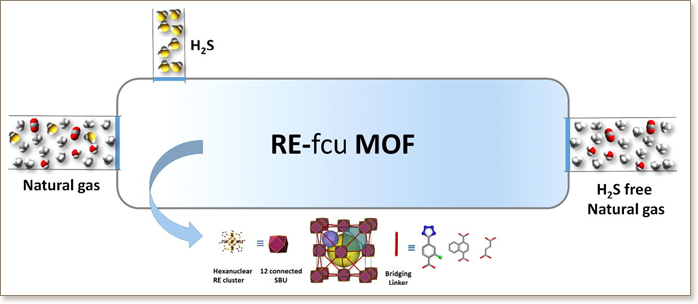
In this work, we present the implementation of reticular chemistry and the molecular building block approach to unveil the appropriateness of Rare Earth (RE) based Metal-Organic Frameworks (MOFs) with fcu topology for H2S removal applications. Markedly, RE-fcu-MOFs, having different pore aperture sizes in the range of 4.7–6.0 Å and different functionalities, showed excellent properties for the removal of H2S from CO2 and CH4containing gases such as natural gas, biogas and landfill gas. A series of cyclic mixed gas breakthrough experiments were carried out on three isoreticular fcu-MOFs, containing linkers of different lengths (between 8.4 and 5 Å), by using simulated natural gas mixture containing CO2/H2S/CH4 (5%/5%/90%) under different adsorption and regeneration conditions. The fcu-MOF platform has good H2S removal capacity with a high H2S/CO2selectivity, outperforming benchmark materials like activated carbon and Zeolites in many aspects. The comparison of H2S removal performance with the related structures of the RE-fcu-MOFs provides insightful information to shed light on the relationship between the structural features of the MOF and its associated H2S separation properties. The excellent H2S/CO2 and H2S/CH4 selectivity of these materials offer great prospective for the production of pure H2S, with acceptable levels of CO2for Claus process to produce elemental sulfur.


